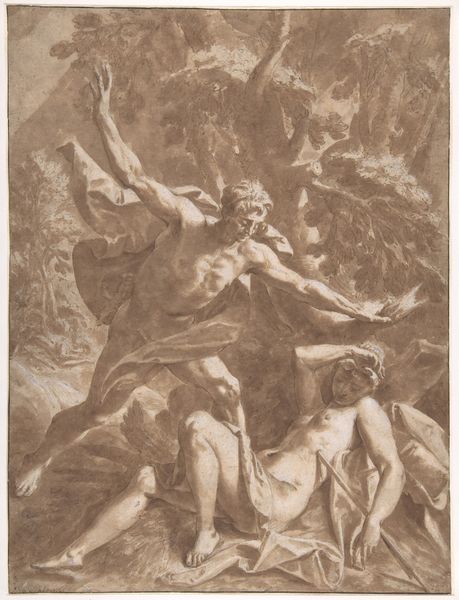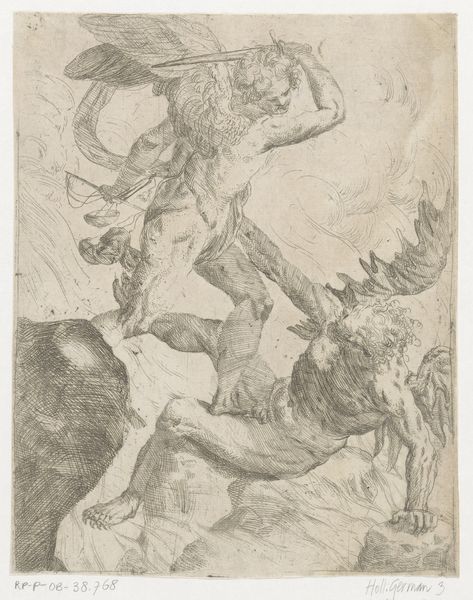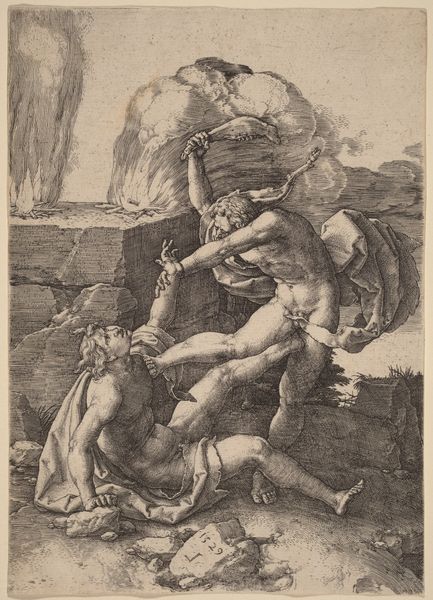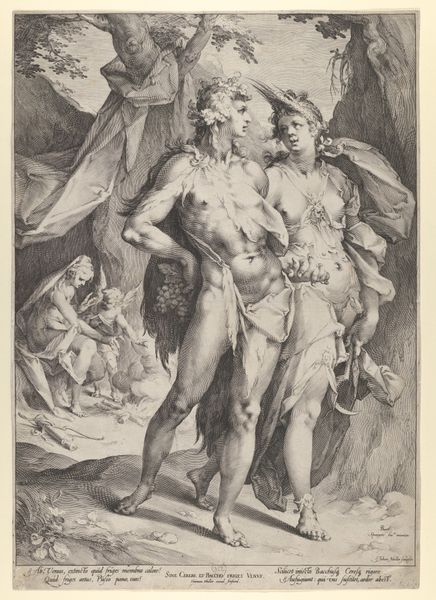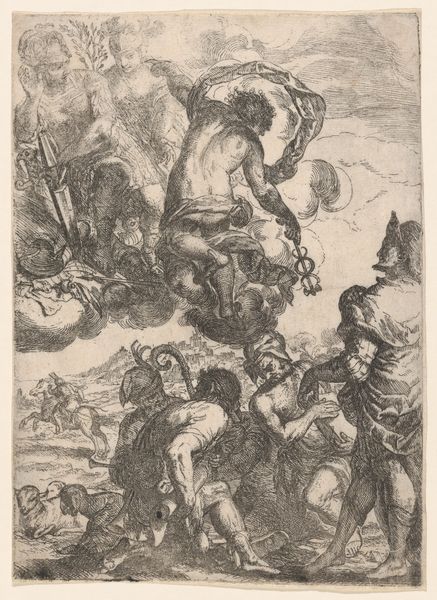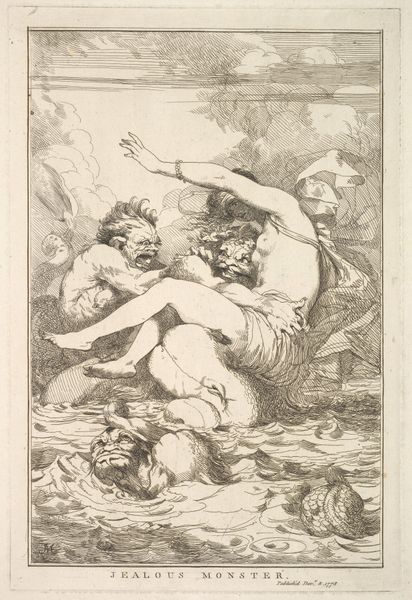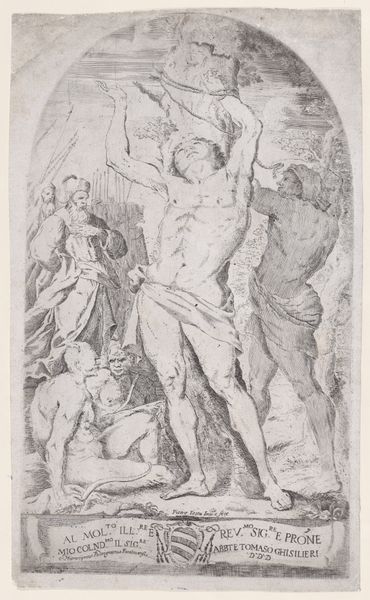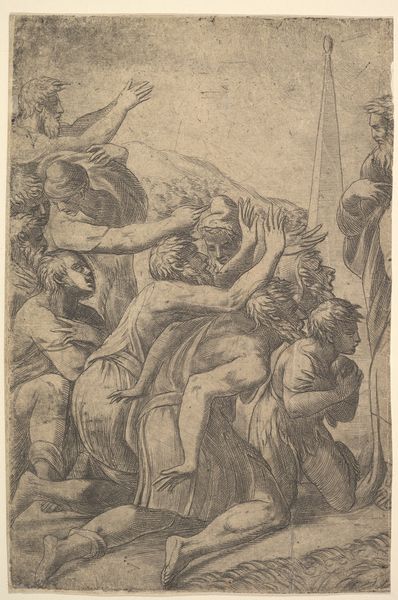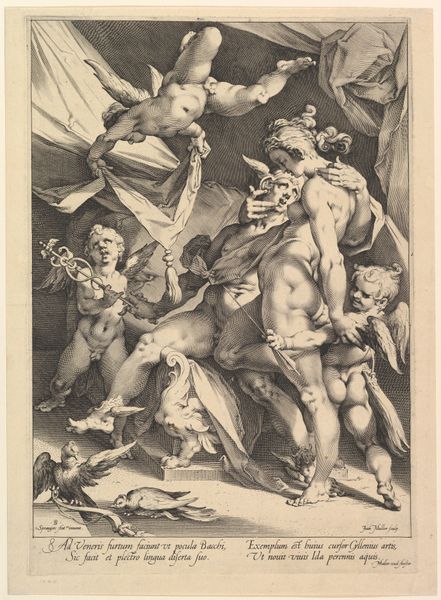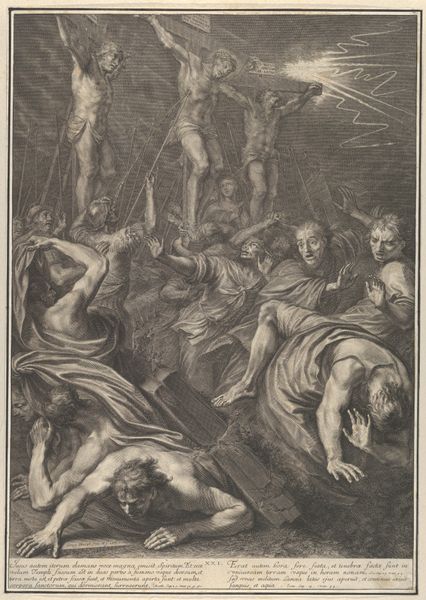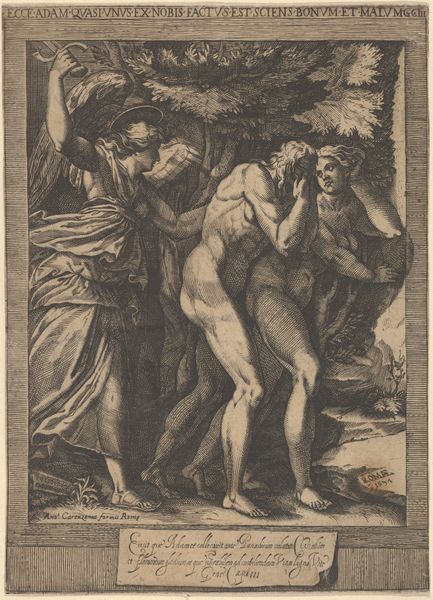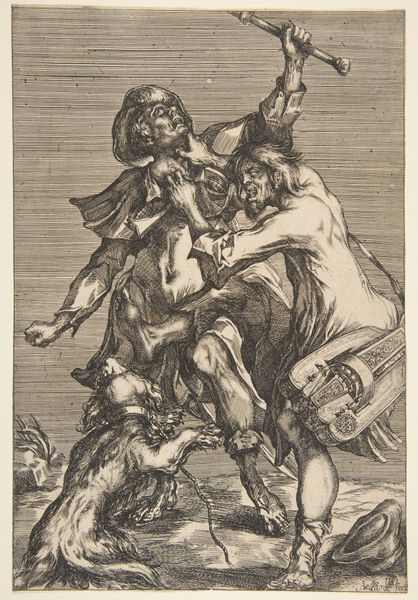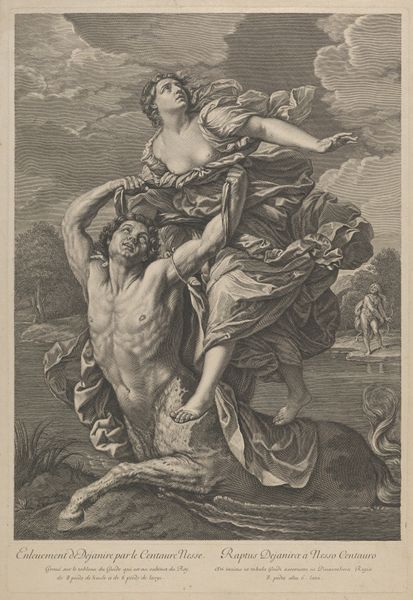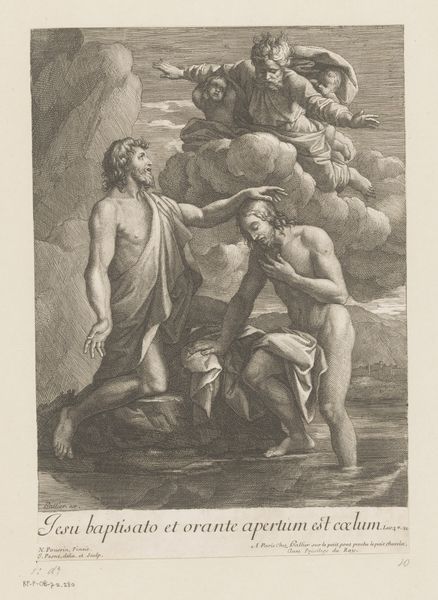
drawing, print
#
pencil drawn
#
drawing
#
amateur sketch
#
light pencil work
# print
#
pen sketch
#
pencil sketch
#
charcoal drawing
#
female-nude
#
pencil drawing
#
ink drawing experimentation
#
pen-ink sketch
#
pencil work
#
male-nude
Dimensions: 5 1/2 x 4 in. (14 x 10.2 cm) trimmed to the platemark
Copyright: Public Domain
Curator: Let's discuss Agostino Carracci's "Orpheus and Eurydice," a print created between 1585 and 1600, now residing at the Metropolitan Museum of Art. Editor: My immediate reaction is the intense drama. The swirling lines, the figures desperately clinging to each other—it speaks to profound loss and a desperate attempt to reverse fate. What's your reading? Curator: I see it as a potent representation of male grief and agency versus female objectification. Orpheus, depicted here as the epitome of masculine sorrow, attempts to wrest Eurydice from the clutches of the underworld, highlighting the societal expectations placed on men to actively grieve and 'save' women. Notice the fire engulfing Eurydice—a symbol of both damnation and the patriarchal structures confining her. Editor: I'm interested in how Carracci utilized the printmaking process. The cross-hatching creates such depth and a tangible sense of dread, especially in the depiction of the flames. The work suggests the physical labor involved in pulling the print as a reflection on the arduousness of Orpheus's task itself. The very materiality echoes the struggle depicted. Curator: And it reflects the patriarchal society that enabled him! Remember that in most renditions of the myth, Orpheus is forbidden to look back at Eurydice, which in its Freudian way, casts him as representative of active, looking masculine control versus passive feminine 'being seen'. Here, his direct, pained expression and desperate hold speak to his emotional investment, arguably a commentary on societal expectations of grief. The broken lyre suggests the failure of art – male creation – to negotiate fate. Editor: Absolutely, the instrument is broken! A great material detail – pointing toward failure of craftsmanship as Orpheus exits. His journey to reclaim her emphasizes action over Eurydice's consent or agency. The method of the print allowed its widespread dissemination - Orpheus' myth continues. Curator: So, we're both considering Carracci’s process within distinct frameworks – my focus is on the gendered dynamics of power, whereas your's foregrounds artistic materiality of its dissemination. Editor: Yes, different routes but we arrive at similar conclusions! A nice look at a master printer working with classical subject matter.
Comments
No comments
Be the first to comment and join the conversation on the ultimate creative platform.
